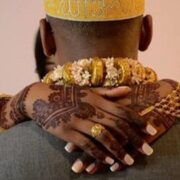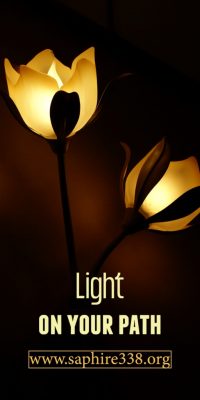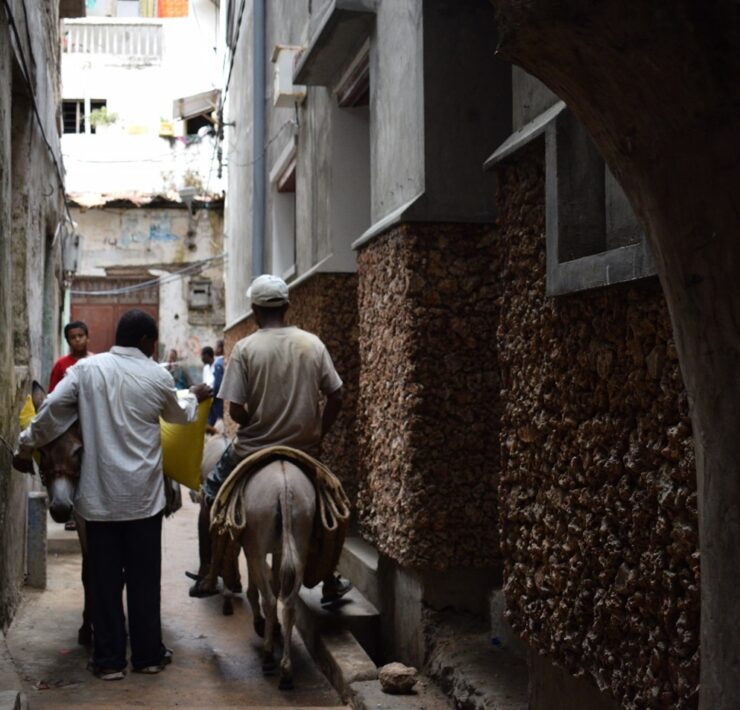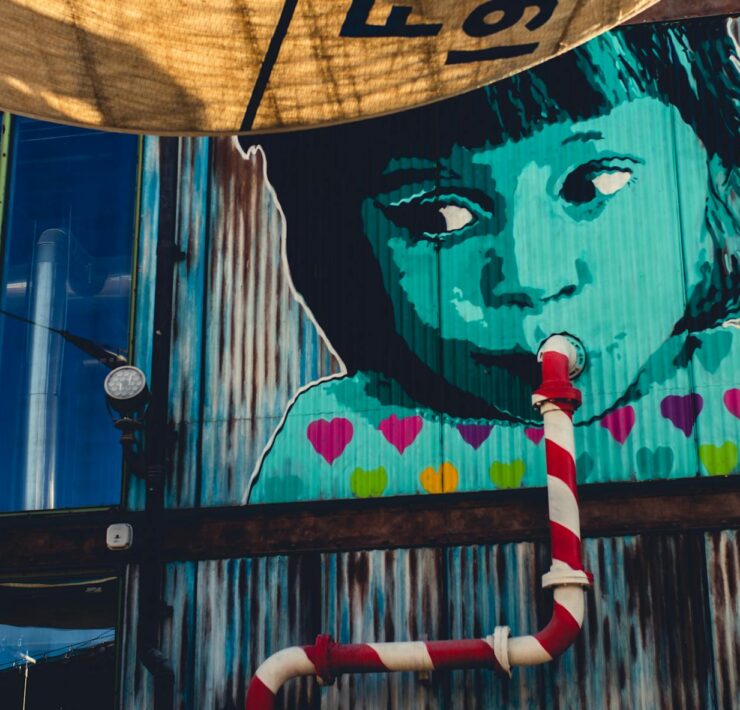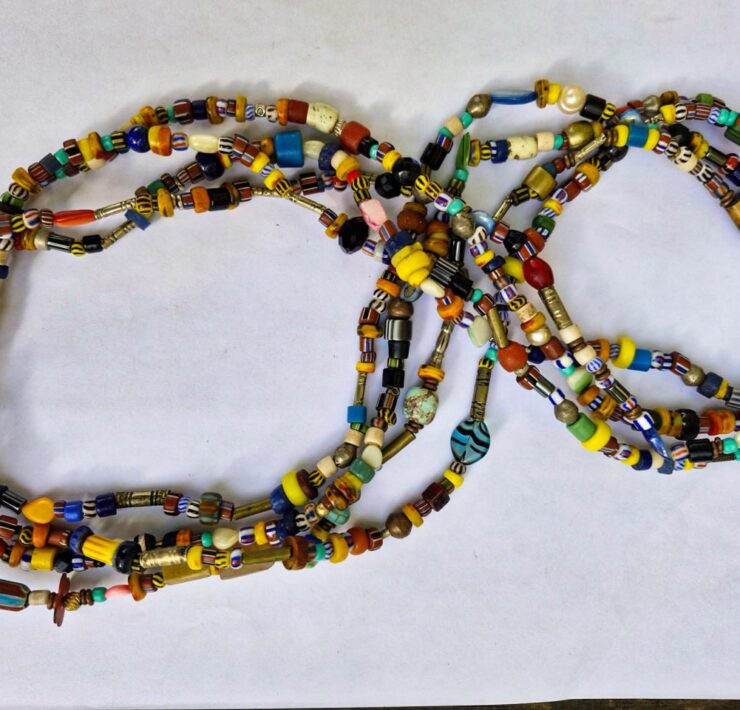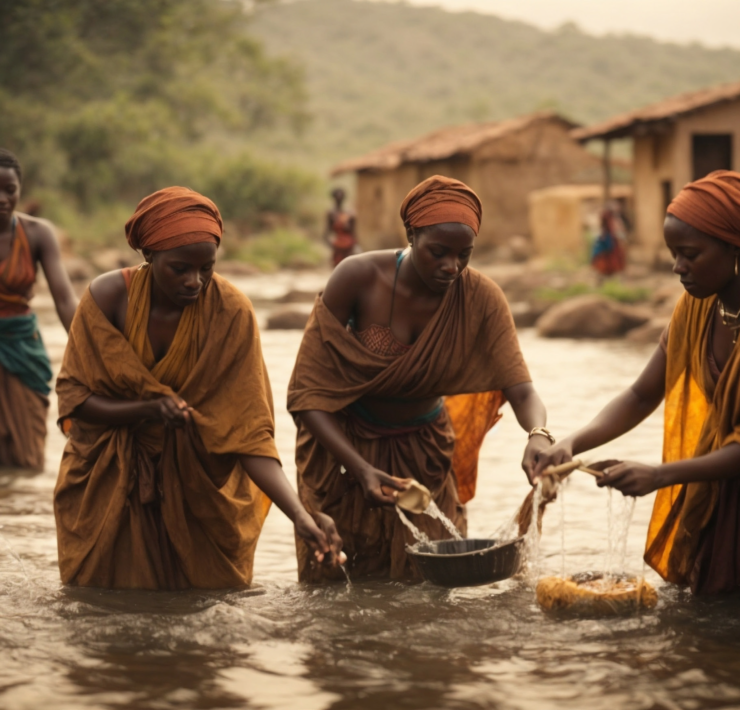
Mr. Wanyama Ogutu is a scholar in the Master of…
Read Next
Passing through the Al-Shabaab route

I took a front seat next to the driver on a bus plying to Mandera county in Nairobi’s River Road street. The bus was painted brownish with a golden Swahili design around the windows and written in capital stylistic letter LAMU TAMU EXPRESS. I dreamed of meeting the Al-Shabaab militia along the way to Lamu Island, catching a glimpse of the vegetation in Machakos, the hills of Kitui, and the arid of Garissa. The driver of Lamu Tamu Express was a cool man resting in his driver’s chamber. He wore an Islamic cap with an intricate rhythm design featuring floral patterns and arch shapes of Koran calligraphy. He was a light-skinned and well-built man. He had a blue eye with a distinctive red spot on his face. From time to time, he pressed the horn and the accelerator created a loud noise to alert passengers that we were running late. I looked at him with an excited smile and waved my hand to signal that we should just start our journey. He did not reciprocate my gesture. Instead, he plucked leaves, picked groundnuts with two figures, and tossed them in his mouth.
I turned to the lady sitting next to me near the bus window and stretched my hand for a warm handshake, but she turned aside and raised her arm to protect her modesty. Her pretty arms were decorated with a beautiful floral design. She was a Muslim lady with light skin in a hijab dress that emitted a strong fragrant “idi” smell. Let me call her the “Hijab lady”. The fragrant smell found me coughing repeatedly while shielding my nose and mouth. Finally, one cough escaped with the utterance: “Nifungulie dirisha!” (open the window). She turned her black hijab tightly protectinig herself from this stranger. “Mfungulie dada!” (lady opens the window) the driver interrupted. She slightly opened the window with agitated gestures. By this time the bus was rumbling, and the conductor was edging closer to inquire about the travelers’ tickets. He tapped my shoulder and I flashed out mine from my pocket. The hijab lady had hidden her ticket inside the black hijab, and she was trying to access it with difficulty. The ticket was stuck somewhere beneath our seats. She tried to remove it but failed and turned to me helplessly. The conductor was becoming impatient and groaned loudly, “Ninja wapi ticket!” (show me the ticket, Ninja) I quickly gathered my composure and came to her aid. I lowered my head beneath the seat and pulled out a small bag. She quickly grabbed the bag and produced the ticket. “Ndiyo hii tikiti, (Here it is!). Then pulled out her hijab and smiled at me. I also smile back, victoriously, we are friends now.
“Yusufu, twende sasa! (Let’s go now!), shouted the conductor. I then knew our driver’s name. He honked the horn loudly and pressed the accelerator. We began our journey to Lamu Island. Yusufu stuffed his mouth with chewed leaves and stems like a goat. Next to his side mirror was a bottle of Coca-Cola and water. He placed a bag of chewed leaves and stems concoction next to the gearbox. I guess the concoction kept him alert throughout the long night journey. “Twapita Garissa?” (Are we taking the Garissa route?) I expressed my curiosity about encountering al-Shabaab along the way. Yusufu turned to me with an amused look revealing his rotten teeth and the green stains. He controlled the bus steering wheel with one elbow while using the other hand to pluck leaves from the gearbox, break open groundnuts on the dashboard, and then toss the concoction into his mouth. We sped past famous buses like Pwani Express, Mombasa Raha, and Mandera Kwetu, and a large cargo truck in the distance. At one point, Yusufu would extend his index finger out of the window in disgust lamenting about the new drivers on the road.

About 300 yards away in early morning, we were awakening to “Alsalalala!” exclamations from the Yusufu. We noticed six young men covering their faces, standing in front of our bus. They were armed with guns perched on their legs. The driver stopped the bus at their feet. The conductor sprinted from their seat and shouted, “Cheki hapa! shika mzigo wako!” (We have checked up and carried your luggage). Suddenly, a sniffer dog jumped onto the bus followed by one of the masked men holding a pistol. The dogs jumped on a hijab lady causing her to shake her legs in fear. The hijab became loose and fell from her face. I bent down and picked up the hijab from the sniffer dog’s mouth. Immediately, Yusufu turned to my seat, unlocked a box, and retrieved a brown envelope. He handed it to the man in front of the bus and took it with two fingers. At that moment I felt a wave of fear on my nerves. The Garissa route is notorious for hijacking crimes, bombings of buses, and the illegal trafficking of migrants. I began to regret my desire to encounter the Al-Shabaab militia on my journey to Lamu Island. I remember a professor warning me about traveling to Lamu by road. He gave me a newspaper cut out of a bus from Nairobi that was bombed along the same route. It had a fatal picture of a passenger lying dead with gunshot wounds and a wreckage bus on the road. At that time the men escorted the hijab lady a distance behind the bus, followed by the conductor. Yusufu followed the conductor folding his hands tightly, and handed it to men with guns. For a brief moment, our eyes locked with one of the masked men, and I forced a smile pretending nothing had happened. He then turned away and signaled our bus to continue our journey. The hijab lady ran very fast, shaking her legs while the conductor paced slowly.
I closed my eyes for a nap and wondered that why we used a dangerous route (Al-Shabaab militia road) to Lamu, and why the bus; Lamu Tamu Express, was involved in crime by ferrying an illegal hijab lady. The gesture of the driver and conductor before men with guns was suspicious. I guess they were illegally abetting the transport of hijab lady to Somalia. There was a drama of breaking a box in my seat, the panic of the hijab lady in handcuffs, and the negotiating conductor. I opened my eyes when someone tapped my back. The bus was moving at speed and the passengers very quiet. The cool breeze sound was heard from our windows as Yusufu focused on steering. “Why look at Afande (police) face to face?” “Stop your stupidity!”. The conductor blustered me in Swahili diction. I knew that those men were anti-terrorist police officers manning the Garissa route to Mandera. They were uncomfortable with my look because they were involved in mischievous business. They thought I was a CID police officer or an anti-corruption man. The conductor fumed at me so fervently while pushing my head to head with the hijab lady, but I kept quiet. We traveled through the hideout of the Al-Shabaab militia in the thick and dense Boni Forest. The troops of the Kenya Army were constantly moving in speed back and forth in their speed vans. We saw people in civilian clothes with AK-47 guns lying dead before army armored vehicles. In another instance, we heard the sound of army helicopters roaring overhead with their guns pointed at the forest. We passed through the semi-desert of Garsen, where we saw the end of the earth and sandy ground. This is a place where The Hijab lady disappeared in a speeding translucent pro-box car in the Somali direction. After a long trip, we passed through the bushy lands to Lamu mainland.

Mokowe is a small cool town located on the mainland of Lamu County. Its most prominent features include a mosque, vibandas (small shops) that house bus offices, and old harbor buildings. A few steps away is Lamu Sea with a parking yard for the cargo and passengers’ boats known as mashua, race boats, and fiber boats. The town is populated with young men running around. Many of them wore aging Islamic caps, shorts that reached knee length, and WORLD CUP T-shirts written in ARGENTINA, FRANCE, BRAZIL, and English football leagues. They are engaging in heated arguments in the Swahili language about ownership of the passengers. Some are seen grabbing passengers’ luggage to their favorite boats, while others are hawking their eyes for the potential passengers. In the distance, you could see a group of young men offloading goods from a lorry to a boat, while others carry large fish from the sea. Women are seen carrying baskets filled with barafu (cool fruit waters), cold water, mkorosho (cashew nuts), kashata, mabuyu (baobab fruit), and mango juice. It is very hot at approximately 35°C, and a breeze is blowing from the sea. Everyone is sweating, while some women with baskets moving around cooling their bodies. A tall young man approached me and we headed to a standby mashua (a traditional large triangular sailboat) on the sea of Mokowe. We finally sailed on the sea to Lamu Island accompanied by six women in buibuis, four in hijabs, and two Swahili men wearing bright white kanzus. The mashua boat moved swiftly past old Swahili buildings, hotels, and a vast expanse of mangrove forest.
I still remember the wholeheartedly appraisal from the Lamu Fort Museum officials; chief librarian, Khadija Issa and curator Mohammed Mwenje, “We u miongoni wa watafiti kutoka Afrika wachunguzao utamaduni Uswahilini Kisiwa cha Lamu.” (You are among a few researchers from the African regions exploring the peculiar culture of Swahili and our environment here on Lamu Island). It still warms my heart now. My research stretched me to delve into Islamic traditions, Swahili culture, and the natural resources of Lamu Island. I vividly recalled a feverish battle at the university defense room. Professors were evaluating the cutting-edge study and its potential impact on a new generation of artists in Africa and beyond. I stood confidently and underscored that it is high time for artists in Africa to draw inspiration from the environment. I challenged the idea of artists and scholars relying on foreign materials and Western ideologies to forge their own identities. After the defense, the chairman of the Kenyatta University postgraduate board; Prof George Vikiru declared my research was worth pursuing. It marked a journey to explore unique African culture as a subject, and utilize the native environment as a source painting medium. One needs to dream impossible things and take risks; it may fail or succeed, but ambition gives birth to good fruit according to French President Emmanuel Macron.
Subscribe now for updates from Msingi Afrika Magazine!
Receive notifications about new issues, products and offers.
What's Your Reaction?
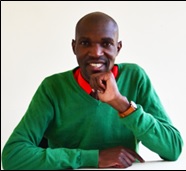 PIN IT
PIN ITMr. Wanyama Ogutu is a scholar in the Master of Arts (Fine Arts) program at Kenyatta University. He is also a practicing visual artist specializing in drawing, painting, and sculpture within, Nairobi, Kenya. He focusing in Painting with its’ philosophy, education and extension to Africa contemporary Art. Most of his artworks focus on interaction, environment, and education. Wanyama has a passion for fine art research; its philosophy, development, and relevance. He writes on profound academic topics, where he has presented and published in international journals and conferences around the world. He is a consultant in innovation and creative strategy on issues affecting our society. He is currently a part-time teacher at some TVET institutes within Nairobi.










